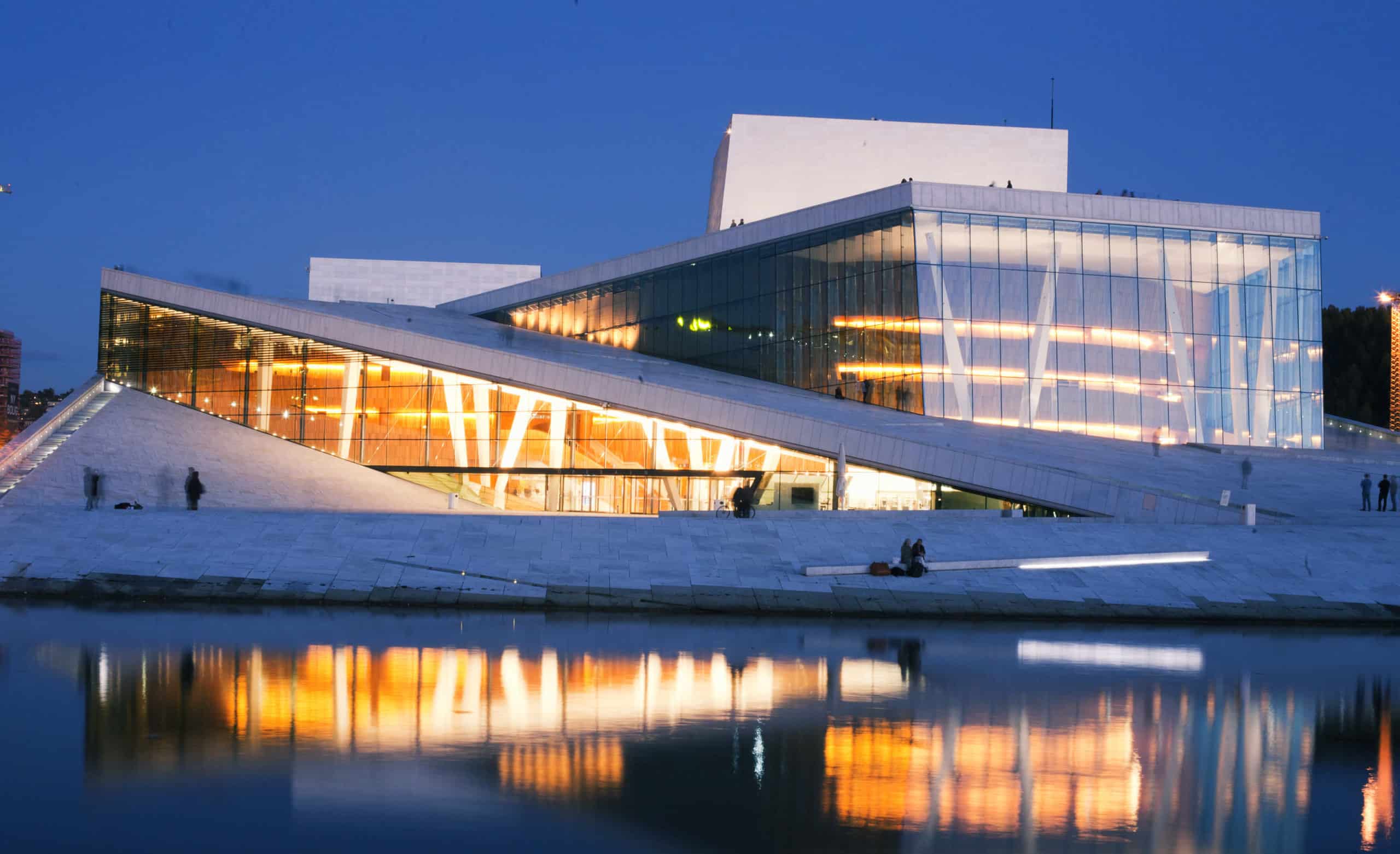The City of Art
Only about a quarter of Norway’s capital consists of houses, streets and squares. Including Museums and libraries devoted to Henrik Ibsen and Edvard Munch. The rest is forest, lakes and the world’s most famous ski jump.
From almost everywhere in the city, one can see Holmenkollbakken up the hill. And from the ground it has a breathtaking view over the Norwegian capital. This would certainly have been the finest arrival in Oslo City: A technically perfect ski jumping straight into the centrum. But even with the hill record in 2011, Andreas Kofler only made 141 meters in the direction of the city center.
Christiania
Although Oslo City celebrated its 1000 year anniversary in 2000, one can argue that the current city was first born after the great fire in 1624. Before that time (from about 1000) the city core was in Bjorvika (Bjørvika in Norwegian). Old Oslo City was a trading community and bishopry. Håkon 5 (1299-1319), who built the Akershus Fortress, was the first king who lived permanently in the city. After a fire in 1624,Christian IV, king of Denmark and Norway, rebuilt the city on the other side of the walk. Christian put his name on the city by calling it Christiania. The new city grew thanks to sawmills and ship fittings, and it happened despite that the king had imposed a so-called “bricked by force”-law: It was prohibited to use wood as a building material in the town.
Children playing with leaves i The Frogner ParkNorway’s Capital
Denmark who had sided with France in the Napoleonic wars, had after the final French defeat refrained Norway to neighboring Sweden. Towards the end of 18oo’s Christiania (with K from 1877) swung up to become a center for Norway’s cultural renaissance. A national wave rolled across the country. In 1905 Norway had gone out of the union with Sweden. Prince Carl of Denmark was elected king and took the name Haakon 7, and Kristiania was declared as the capital. First in 1925 the city took back its original name Oslo
From City Hall to the Central Station
A landmark is the town hall with its two massive towers, built between 1931 and 1950 just off the bay. Here the Nobel Peace Prize have been awarded every year since 1990. Just a few steps downtown, is one of the city’s arteries, Karl Johans Gate, between the Parliament and the Royal Palace. Also the National Theatre, History Museum, National Museum of Art, Architecture and Design, the University and government quarter is close by and so is the Central Station.
Summer night at the EkebergrestaurantKvadraturen
The district in the center between Akershus Fortress (1300s), the Cathedral (1697), Upper Vollgate and Skippergata is called Kvadraturen. Here there are still many well-preserved buildings from the 1600s. In Kvadraturen we also find many historical and cultural institutions, such as Theater Museum, Museum of Contemporary art, Borsen (Børsen), Cafe Engebret (where both Ibsen, Bjornson, Grieg and Munch had their regular tables) and restaurant Gamle Rådhus (Old Town Hall), where you can get authentic Norwegian specialties.

Edvard Munch
Edvard Munch is undoubtedly Norway’s most famous painter. His pictures evoke enthusiasm among many, others appalled clap their hands to the face. But no matter how one felt about the painter’s works, the Munch Museum a must for every Oslo City tourist. It applies not only to the legendary “Scream” (read more here). In Oslo City you can also see “Angst”, “Melancholy,” “Vampire,” “Puberty” and “Dance of Life”, not to talk about “Madonna,” which along with “Scream” has increased its fame because of the spectacular thefts, which fortunately ended up that the picture was brought back to its right place. The museum shop also sells “scream” to blow up, so that one always and everywhere can be reminded that life truly is no bed of roses, but at the same time neither should always take it too seriously.
Facts about Oslo City
Population in the City of Oslo City: 650 000 – w/surrounding areas: 1,2 million
Attractions: Holmenkollebakken, The Castle (Slottet), Kon-Tiki Museum, Viking Ship Museum, Norsk Folke Museum, National Gallery, Oslo City Museum, City Hall, Akershus Fortress, The Vigeland Park
Famous Persons from Oslo City
Edvard Munch (1863-1944), Graphic and Painter
Soja Henie (1912-1969), Figure skater, world champion and olympic champion, and actor
Knut Johannesen (born 1933), Skater, world champion and olympic champion
Jostein Gaarder (born 1952), Author
Kjetil Andrê Aamodt (born 1971), Alpinist, multiple omympic champion
[wpgmza id=”14″]
